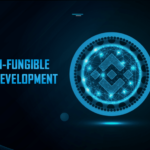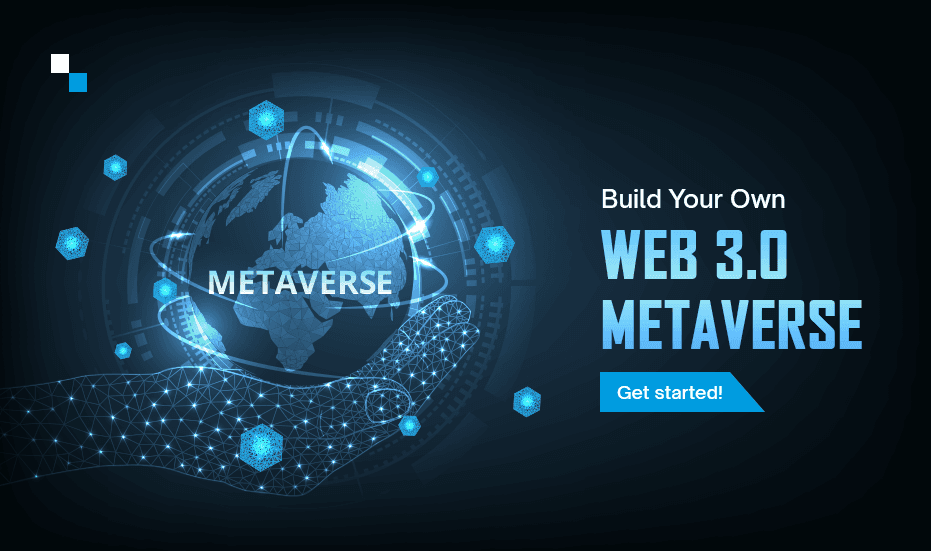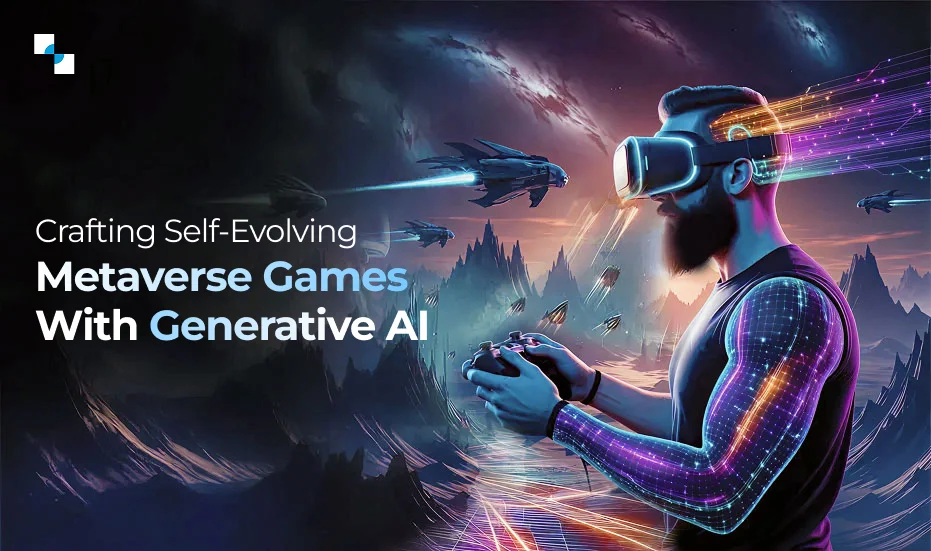We are witnessing a new moment in the history of technology. Web 3.0 and Metaverse, two of the most evolutionary technologies are now converging and leveraging each other. While most technologies work in silos, Web 3 Metaverse development services are making Web 3.0 and Metaverse work together to create something very powerful.
However, before we understand how Web 3.0 and Metaverse complement each other, it’s very important to understand what is a decentralized web (Web 3.0) and Metaverse.
Decentralized Web or Web 3.0
We have seen the Web space evolve from Web 1.0 to Web 3.0. Web 3.0 is popularly known as the latest iteration of Web 2.0 where Web users are able to control and own their creations, digital assets, and online identities.
To understand Web 3.0 better let’s compare it against Web 1.0 and Web 2.0:
| Parameters | Web 1.0 | Web 2.0 | Web 3.0 |
|---|---|---|---|
| Interaction | Read | Read-Write | Read-Write-Own |
| Medium | Static Text | Interactive Content | Virtual economies |
| Organization | Companies | Companies | Networks and DAOs |
| Infrastructure | Centralized servers | Centralized servers on cloud | Blockchain |
| Control | Centralized | Centralized | Decentralized |
As is evident from the above table, Web 3.0 has 5 distinct features. Let us learn what are these:
- Decentralization
Decentralisation is the cornerstone of Web 3.0 and it allows end-users to gain full data ownership. This is made possible by Web 3 metaverse development companies’ that build Web 3 solutions using decentralized peer-to-peer blockchain networks. Thus there is no single point of failure or control in Web 3. - Trustless And Permissionless
Trustless networks allow users to interact with each other without the need for a trusted third party. Basically, the permissionless networks enable users to access the network directly without the control of any governance bodies. Decentralization in Web 3.0 is achieved by trustless and permissionless networks. - Real-life Browsing Experience
Web 2.0 is all about offering a 2-D experience to the users. On the contrary, Web 3.0 is integrating advanced technologies like 3D graphics, and AR/VR to deliver real-life browsing experiences. This aims to blur the lines between physical and virtual worlds which is very similar to Web 3 metaverse development. - AI And ML
Web 1.0 was all about “The hypertext web” and Web 2.0 was all about “The Social Web”. However, in Web3.0 all the user information will be processed through “Semantic Web” and NLP (Natural Language Processing) techniques. Basically, the Semantic Web provides a common framework for applications, enterprises, and communities to share data. All this data sharing is enabled by software – programs that are driven by AI and ML algorithms.
- Decentralization
Build Your Own Web 3.0 Metaverse Platform
Schedule Free Demo- Connectivity
With Web 3.0, information and content will be made accessible to more applications, devices, and products. The present iteration of Web 2.0 forbids users to transfer, manage and use their information the way they want. However, Web 3.0 will break the glass ceiling by using blockchain technology.
As a web 3 metaverse development company we are already witnessing a shift happening from Web 2.0 to Web 3.0. Users are moving from- AWS to IPFS
- LLC to DAO
- Chrome to Brave
The Metaverse
To put it across simply, Metaverse is a new way for people to use the internet. Instead of browsing and interacting with the web content in 2D formats, Metaverse users will be able to engage with the content in a more immersive manner. To deliver all this, Metaverse involves these technologies:
- Virtual reality (VR)
- Augmented reality (AR)
- Mixed reality (MR)
- Cryptocurrencies
- Gaming
- Social media, and much more.
Interestingly, even Web 2.0 can deliver immersive experiences with 3D graphics and AR/VR technology, but because of the element of centralization, it poses a huge threat to users’ data privacy. This is where we feel the need for Web 3 metaverse development as Web 3.0 will ensure decentralization and data privacy of the highest grade.
The Insane Future of Web 3.0 Metaverse
Now that you completely understand the definition of Web 3.0 and the Metaverse, let us understand how both of these technologies complement each other.
- Future of Metaverse is open and decentralized
Only Metaverse that will thrive in the future will be the ones that will allow users to control their data and assets. Users know from their past experiences that companies like Facebook are poor custodians of user data and interest. They might not want to put their trust in a centralized Metaverse and thus would seek Web 3.0 powered metaverse. - Interoperable and Open source
At present, Metaverses are operating as walled gardens. With minimum connectivity and interoperability between the Metaverse, the creator economy is suffering and this is where Web 3.0 plays a vital role. As Web 3.0 uses the Semantic Web powered by blockchain, AI, and ML, it enables connectivity between Metaverses in a privacy-centric, trustless, and permissionless manner.
Final thoughts
As we move toward the Metaverse of the future, we need to consider what iteration of the Web we want to underscore in the Metaverse. We are a web 3 metaverse development company and we understand that Metaverse is all about merging the virtual and physical worlds. For this concept to thrive, it is very important that it operates on a version of the Web that enables interlinking and asset transfers in a seamless manner and that we know is achievable only using Web 3. If you intend to build Your Own Web 3.0 Metaverse, connect with Antier Web 3.0 experts right away!







